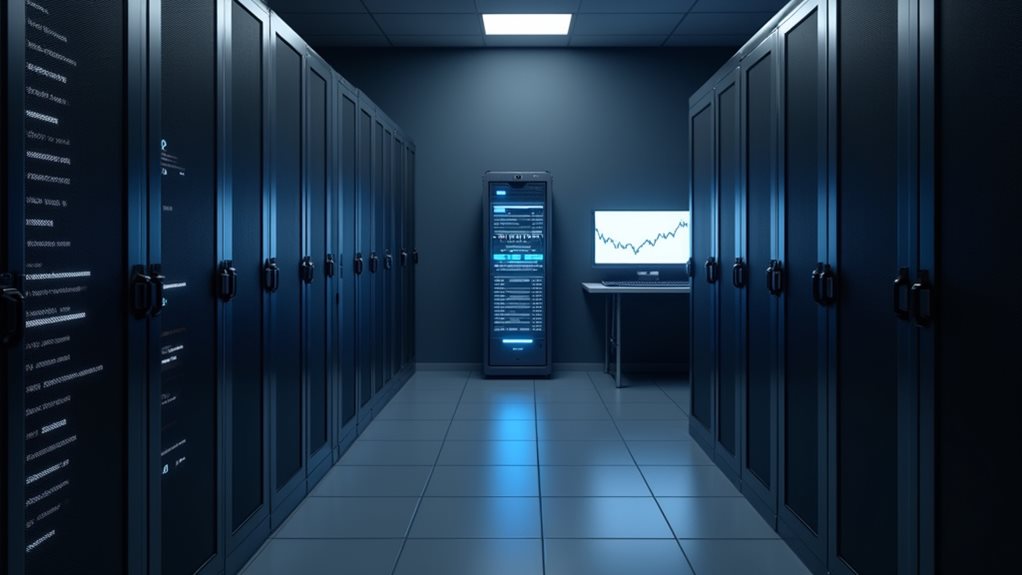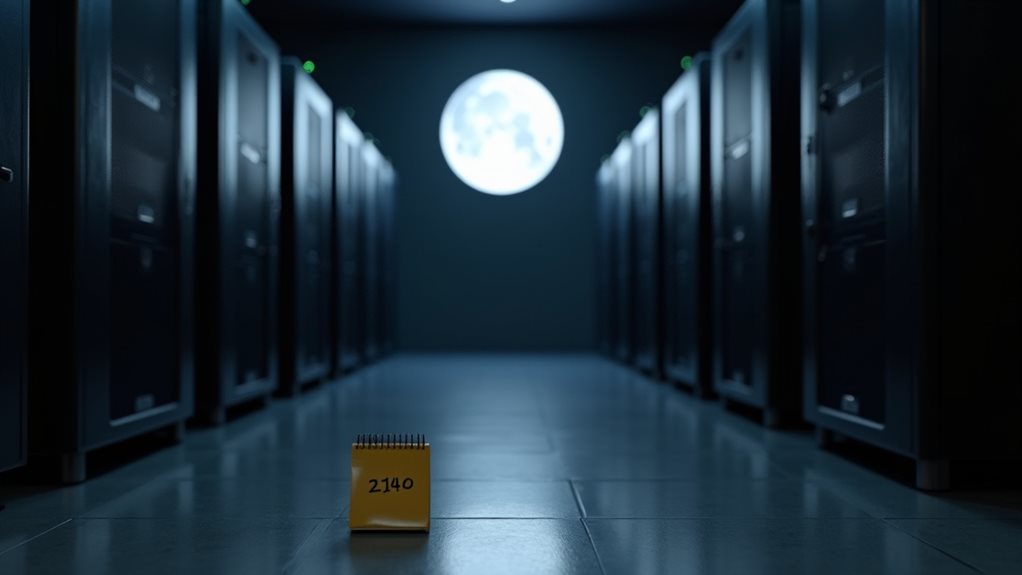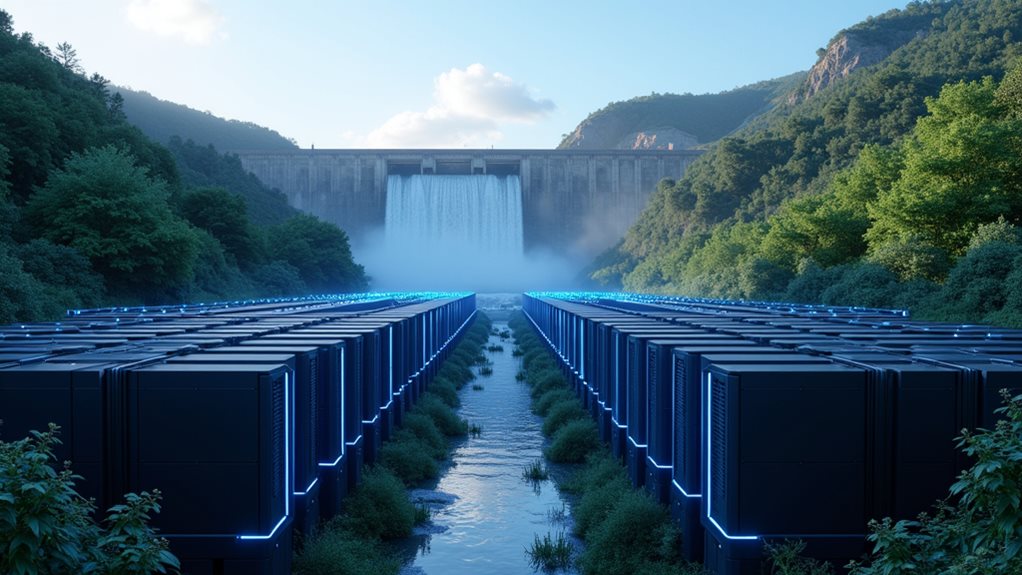Bitcoin mining is alive and kicking in 2025, but don't expect to strike it rich with a laptop in your basement. The game has changed – industrial giants now dominate with massive operations churning out Bitcoin at $27,000 per coin while prices hover around $105,000. Solo miners are basically extinct, replaced by corporate behemoths with deep pockets and warehouse-sized facilities. The mining landscape has evolved dramatically, and there's quite a story behind this transformation.

So, you're wondering if Bitcoin mining is still a thing in 2025? Spoiler alert: it absolutely is. But before you start dreaming about striking digital gold from your laptop, let's get real about what Bitcoin mining looks like these days.
The big players are crushing it. Major mining operations are churning out Bitcoin at around $27,000 per coin, and they're actually making money doing it. Must be nice. These aren't your basement-dwelling crypto enthusiasts from 2009 – we're talking massive operations with cutting-edge hardware and serious capital behind them. With Bitcoin trading at around $105,000, the profit margins for these operations are substantial. The recent block reward halving has made efficiency more crucial than ever.
Gone are the days of hobby miners – Bitcoin's big leagues now belong to industrial-scale operations with deep pockets.
The landscape has changed dramatically. Traditional ASIC mining dominates the network, while those cute little USB miners gather dust in drawers somewhere. Solo mining? Unless you've got a few million lying around for equipment, forget about it. Mining pools are where most small-timers hang out now, earning fragments of Bitcoin like collecting digital breadcrumbs. The process requires miners to generate 64-digit hexadecimal hashes through countless computational attempts.
Here's where it gets interesting – or complicated, depending on how you look at it. Some countries welcome miners with open arms, while others slam the door shut. China said "nope," Nepal followed suit, but places like the U.S. and Canada are still playing ball. While mining offers portfolio diversification opportunities, regulatory uncertainty remains a major concern across different jurisdictions. Just remember, every jurisdiction has its own rulebook, and the taxman always wants his cut.
The environmental debate rages on. Bitcoin mining still gulps electricity like a thirsty teenager at a soda fountain. But hey, the industry's trying to clean up its act. Miners are flocking to areas with cheap renewable energy, and green tech is becoming more than just a buzzword.
Technology keeps evolving, because of course it does. The latest mining rigs make older models look like calculator watches. Companies are even throwing AI into the mix, creating new revenue streams because apparently, mining wasn't complicated enough already. Advanced cooling systems and efficient housing units are reshaping what mining facilities look like.
The market? It's as unpredictable as ever. Mining difficulty keeps climbing, hash rates are through the roof, and profitability swings with Bitcoin's price like a pendulum on steroids. Smart operators are diversifying, adding AI services to their repertoire. It's not just about mining anymore – it's about surviving and adapting in an ecosystem that never stops evolving.
Frequently Asked Questions
What Happens to Bitcoin Miners After All Coins Are Mined?
After all bitcoins are mined, miners don't just pack up and go home.
They'll keep validating transactions and securing the network – just for transaction fees instead of new coins. Pretty basic switch, really.
Miners will need to get creative though, branching into things like AI co-hosting and renewable energy to stay profitable.
Some might even partner with data centers. The game changes, but the players stay the same.
Network security remains essential.
Can Quantum Computers Break Bitcoin Mining Algorithms in the Future?
Quantum computers could theoretically crack Bitcoin's cryptographic algorithms – but don't panic just yet.
While these super-machines might eventually use Grover's algorithm to speed up mining or break ECDSA signatures, we're nowhere close to that reality.
Current quantum computers are like toddlers trying to solve calculus – they lack the necessary qubits and stability.
Experts estimate it'll be 2030-2040 before they pose any real threat.
Bitcoin's got time to adapt.
Will Mining Pools Still Be Relevant for Bitcoin Mining in 2025?
Mining pools will remain vital in 2025.
With sky-high mining difficulty and industrial-scale operations dominating the landscape, solo mining is basically pointless. Major players like Foundry USA and Antpool aren't going anywhere – they're just getting bigger.
Pools offer stability, regular payouts, and essential features like MEV integration. Plus, they're adapting to new tech and regulations.
Let's face it: in Bitcoin mining, it's go pool or go home.
How Much Electricity Will Bitcoin Mining Consume Globally in 2025?
Bitcoin's projected global electricity consumption in 2025 is expected to reach levels comparable to entire countries like Australia or the Netherlands.
We're talking about roughly 130-150 TWh annually – yeah, that's a lot of power. Estimates suggest it'll represent about 0.55% of global energy use.
Exact numbers? Pretty tough to nail down. Mining operations swing wildly based on Bitcoin's price, electricity costs, and whether governments decide to play nice or throw regulatory curveballs.
What Alternative Cryptocurrencies Might Be More Profitable to Mine Than Bitcoin?
Monero stands out as a key alternative due to its ASIC-resistant design – regular folks can actually mine it with basic GPUs.
Litecoin keeps chugging along with lower mining difficulty than Bitcoin.
Zcash offers solid privacy features and decent mining returns.
Dogecoin, despite its meme status, remains surprisingly mineable.
Even Ethereum Classic maintains appeal for GPU miners.
Each has lower barriers to entry than Bitcoin's resource-intensive requirements.









